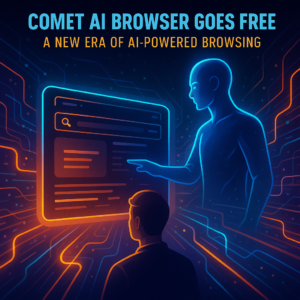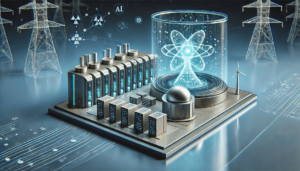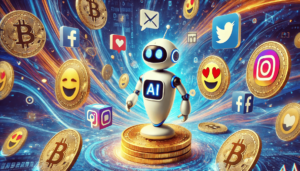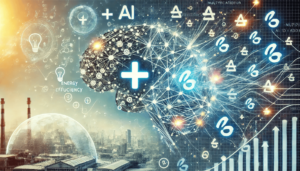The Dawn of Autonomous AI Collaborators: From Devin’s Software Engineering to OpenAI’s Conversational Mastery
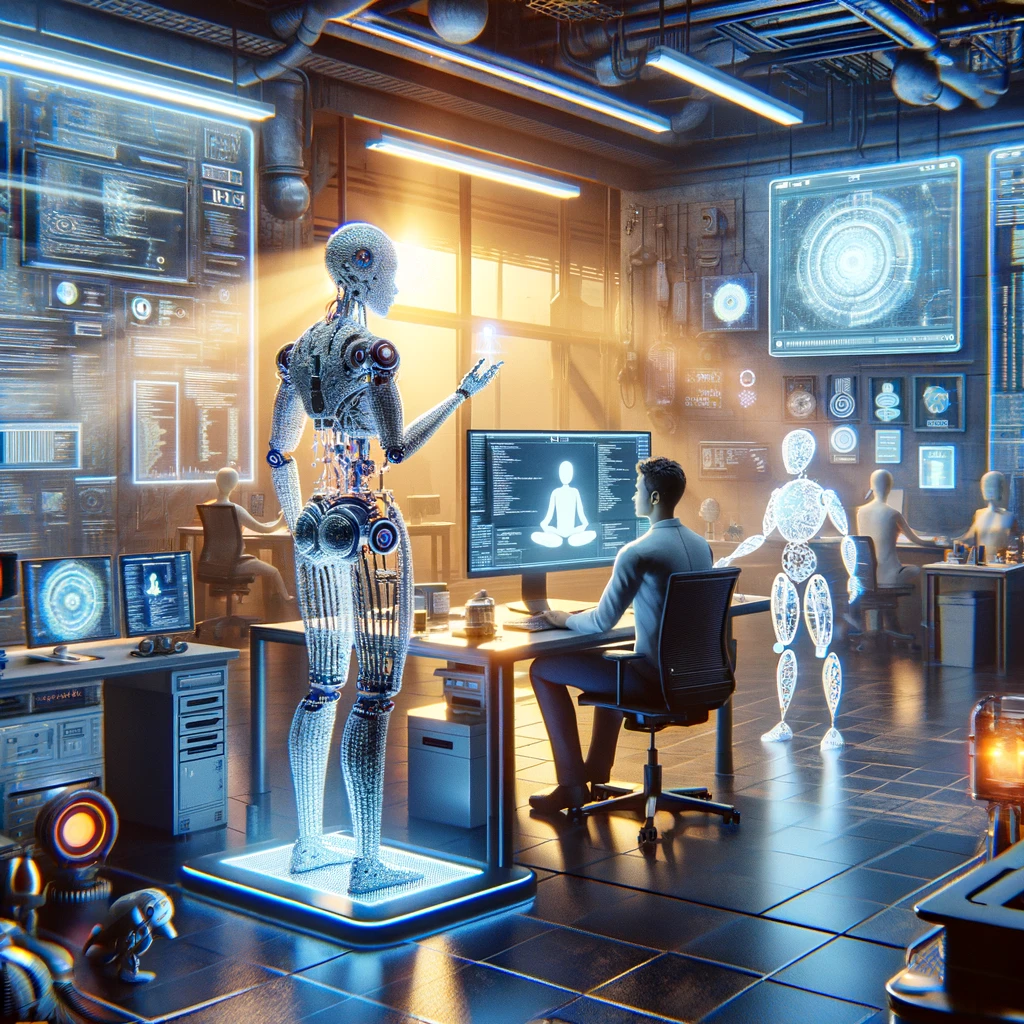
A glimpse into the future of software engineering and everyday tasks enhanced by AI collaborators Devin and 'Figure 01'.
- How are Devin and OpenAI’s “Figure 01” setting the stage for the future of human-AI collaboration?
- What ethical and societal implications arise from the integration of autonomous AI technologies like Devin and interactive AI such as “Figure 01”?
- How can society navigate the challenges and opportunities presented by advancements in AI collaborators, ensuring they enhance rather than diminish our humanity?
In the realm of artificial intelligence, two groundbreaking advancements are setting the stage for what could be the future of human-AI collaboration. First, we have Devin, introduced as the world’s first fully autonomous AI software engineer, a marvel developed by Cognition Labs. Devin represents a significant leap in AI’s role within software development, promising to revolutionize how engineering teams operate and innovate. Meanwhile, OpenAI’s latest venture into speech-to-speech reasoning neural networks, demonstrated through the project “Figure 01“, showcases an AI’s ability to understand, reason, and act upon spoken requests in a physical context. These developments not only highlight the rapid progress in AI technologies but also raise fascinating questions about the future of AI-human interaction and collaboration.
Devin AI: A New Era for Software Engineering
Imagine an AI that can autonomously debug code, deploy applications, and even learn new technologies on the fly. That’s Devin for you. This AI software engineer, developed by the minds at Cognition Labs, is designed to work alongside human engineers or independently, tackling complex engineering tasks that would typically require thousands of decisions. Devin’s introduction marks a pivotal moment in the tech industry, promising to shift how we approach software development and problem-solving. By offloading routine or highly complex tasks to Devin, engineers can focus on more creative and innovative aspects of their work, potentially accelerating the pace of technological advancement.
OpenAI’s Speech-to-Speech Reasoning Neural Networks
On another front, OpenAI’s project “Figure 01” introduces us to an AI capable of speech-to-speech interaction, demonstrating an understanding of its physical environment and the ability to execute tasks based on verbal commands. This technology goes beyond simple voice recognition or command execution; it encompasses reasoning and contextual understanding, allowing the AI to interact with the physical world in a meaningful way. The implications of such technology are vast, from assisting in household chores to providing support for individuals with disabilities, offering a glimpse into a future where AI can serve as a more integrated and interactive assistant in our daily lives.
Bridging the Digital with the Physical: The Future of AI Collaboration
The developments represented by Devin and “Figure 01” illustrate a future where AI not only augments human capabilities in digital spaces but also interacts with the physical world in nuanced and sophisticated ways. As these technologies continue to evolve, we might see a convergence of digital and physical AI assistants, working in tandem to support human endeavors across various domains.
Ethical and Societal Implications
As we stand on the brink of this new era, ushered in by autonomous entities like Devin and interactive AI such as “Figure 01”, the ethical and societal implications of such advancements loom large and demand our keen attention. The prospect of Devin, an AI capable of autonomously debugging code and deploying applications, raises crucial questions about the future of the software engineering profession. While Devin promises to liberate engineers from mundane tasks, enabling a sharper focus on creative problem-solving, it also prompts a reevaluation of job roles, skills necessity, and employment dynamics within the tech industry. Could Devin lead to a scenario where the demand for certain technical skills diminishes, or might it instead elevate the role of engineers to more conceptual, design-focused tasks? These considerations are paramount as we navigate the integration of AI into workplaces.
Similarly, “Figure 01” foray into understanding, reasoning, and acting upon spoken requests in real-world scenarios brings forth a multitude of ethical considerations, especially regarding privacy and autonomy. For instance, as “Figure 01” demonstrates its capability to interact with the physical environment based on verbal commands, questions arise about consent and data security. How do we ensure that such AI systems respect user privacy, especially in domestic settings where sensitive information might be inadvertently disclosed? Furthermore, the scenario depicted—where the AI identifies and acts upon tasks like disposing of trash or organizing dishes—while showcasing remarkable technical achievement, also underscores the need for clear boundaries and guidelines to prevent potential misuse or overreach.
Devin and “Figure 01” represent significant milestones in AI’s evolution, heralding a future where AI’s role extends beyond digital spaces into tangible, everyday interactions. However, these advancements also spotlight the imperative for robust ethical frameworks and regulatory measures to guide their development and application. By scrutinizing these examples, we grasp the practical implications of AI technologies on society and the workforce more vividly, reinforcing the need for a balanced approach that fosters innovation while safeguarding fundamental human values.
As we forge ahead, the dialogue surrounding these technologies must evolve to address these ethical quandaries, ensuring that AI serves as a force for good, enhancing human capabilities without compromising our societal fabric or individual rights. The journey of integrating AI like Devin and “Figure 01” into our lives and workplaces is not merely a technological challenge but a profoundly ethical one, demanding thoughtful consideration and collective action.
Neuralink’s Milestone: A Contextual Deep Dive into AI’s Ethical Frontier
The ethical landscape surrounding emerging AI technologies like Devin and “Figure 01” resonates with the themes explored in our analysis of Neuralink’s advancements. While Neuralink probes the frontier of merging human cognition with technology, Devin and “Figure 01” navigate the realms of autonomous software engineering and physical-world interaction, respectively. Despite their distinct domains of application, these technological leaps share common ethical ground, prompting us to examine the implications of AI’s increasing integration into both our digital and physical lives.
A key ethical parallel lies in the potential for profound shifts in the workforce. Just as Neuralink’s brain-computer interfaces might one day redefine our approach to cognitive enhancement and disability aid, Devin’s autonomous software engineering capabilities raise questions about the future role of human engineers. Will these AI advancements lead to job displacement, or will they rather transform existing roles, demanding new skills, and fostering a collaborative synergy between humans and AI? Similarly, “Figure 01” interaction with the physical environment through reasoned responses to vocal commands echoes Neuralink’s ambition to bridge human thought with external actions, each raising pivotal concerns about autonomy, consent, and the preservation of human agency in an AI-augmented world.
Moreover, the ethical considerations surrounding privacy and security are magnified in both contexts. With Neuralink, the direct interface with the human brain introduces unprecedented concerns about mental privacy and the security of neural data. In parallel, the deployment of AI technologies like Devin and “Figure 01” in everyday tasks and professional settings necessitates rigorous safeguards to protect intellectual property, and personal information, and prevent unauthorized surveillance or manipulation.
Yet, despite these challenges, each of these technological frontiers—Neuralink’s neural interfaces, Devin’s software engineering prowess, and “Figure 01” speech-to-action capabilities—also heralds remarkable possibilities for human enhancement, societal benefit, and the enrichment of human-AI collaboration. As we navigate these ethical frontiers, it becomes imperative to foster a discourse that not only scrutinizes the risks but also contemplates the vast potential of these innovations, ensuring they align with our collective values and contribute positively to the fabric of society.
In drawing these comparisons, we find that the ethical dilemmas posed by Neuralink, Devin, and “Figure 01” offer a mirror to our hopes and fears about the future of AI. They compel us to consider not just how we might live alongside increasingly autonomous and capable AI, but how we can guide their evolution to enhance the human experience, safeguarding dignity and rights in an interconnected world.
Looking Ahead
As we stand on the precipice of a new dawn with AI collaborators like Devin and “Figure 01”, we’re not just witnessing the evolution of technology; we’re participating in a pivotal moment in human history. These advancements signal thrilling possibilities for AI to augment human creativity, productivity, and daily life in ways we’ve only begun to imagine. However, the road ahead is lined with both opportunities and challenges, each demanding our attention and action.
How do we, as a society, ensure that the integration of AI into our lives enhances rather than diminishes our humanity? What steps must we take to prepare for a future where AI collaborators become ubiquitous in our professional and personal spheres? These questions are not rhetorical but are invitations to each of us to engage with the unfolding narrative of AI’s role in shaping our world.
As readers, innovators, policymakers, and global citizens, we must participate in crafting the answers. We must advocate for ethical guidelines that govern AI development, promote educational initiatives that prepare our workforce for AI-augmented roles, and support research that explores the full spectrum of AI’s impact on society.
I encourage you to join the conversation. Share your thoughts, fears, and hopes for the future of AI in the comments below or on social media. Let’s collaborate on envisioning and working towards a future where AI technologies like Devin and “Figure 01” not only revolutionize our capabilities but do so in a way that upholds our deepest values and enriches the human experience.
The journey ahead is as daunting as it is exhilarating, but by engaging with these technologies thoughtfully and proactively, we can navigate the challenges and seize the opportunities they present. Together, let’s explore the vast potential of AI to transform our world, ensuring that as we move forward, we do so with wisdom, compassion, and a steadfast commitment to the greater good.

